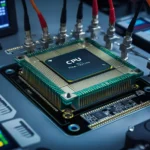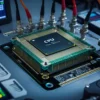Introduction
In the rapidly evolving landscape of technology, scalability stands as one of the foremost requirements for achieving long-term success, particularly in the realms of software engineering, product design, and systems architecture. Modular design principles have emerged as an essential methodology for achieving scalability and flexibility in modern solutions. This article delves into the core components of modular design, examining its benefits, technical innovations, industry insights, and future outlook.
Understanding Modular Design
At its core, modular design is an architectural strategy that breaks down systems into smaller, manageable components or modules, each with defined functionalities. This design philosophy encourages the reuse of components, ease of updates, and agility in deployment. Unlike monolithic architectures, where changes can involve a complete overhaul, modular systems allow for more granular adjustments.
Key Characteristics of Modular Design
- Separation of Concerns: Each module addresses a specific aspect of the system, which simplifies development and reduces interdependencies.
- Interoperability: Modules can communicate through defined interfaces, allowing them to work together seamlessly.
- Reusability: Once a module is developed and tested, it can be employed in multiple projects without having to be redesigned.
- Scalability: New modules can be added or existing ones can be modified without affecting the overall system, making it easier to scale solutions.
The Evolution of Modular Design
Historically, modular design concepts trace back to engineering disciplines but have gained substantial traction in the software industry over recent decades. The rise of Agile methodologies and DevOps philosophies emphasized the need for quick iterations and responsiveness to change. As applications grew in complexity, modular architectures offered a pragmatic solution to manage this intricacy.
Industry Insights
Software Development
In software engineering, modular design is epitomized by microservices architecture. This approach encourages the development and deployment of small, independently deployable services that encapsulate specific business functionalities. As companies transition to cloud-native environments, the emphasis on microservices has soared, allowing for rapid scaling, parallel development, and more straightforward maintenance.
-
Success Stories: Companies like Netflix and Amazon have become paradigms of successful modular design applications. Through microservices, they’ve achieved not only scalability but also enhanced resilience and fault tolerance.
- Challenges: While modular approaches have many benefits, they are not without challenges. Issues such as service discovery, data consistency, and inter-service communication have surfaced, prompting innovations in orchestration tools and APIs.
Hardware Engineering
Modular design principles have also significantly affected hardware engineering. The rise of small, powerful components has stimulated innovations in computing hardware. Products such as Raspberry Pi and other single-board computers exemplify modularity, allowing developers to create customized hardware solutions effectively.
-
Industry Adoption: Companies like Google and Intel are investing in modular hardware platforms that allow businesses to tailor solutions that adapt to varying needs. For example, the Intel NUC (Next Unit of Computing) platform has gained traction for its compact size and modularity.
- Future Developments: The push for sustainable design principles has led to developments in modular hardware where components can be easily replaced, extending the lifecycle of products and reducing electronic waste.
IoT and Smart Devices
In the realm of Internet of Things (IoT), modular design is crucial for dealing with the heterogeneous nature of devices and interoperability. IoT systems typically consist of various sensors, actuators, and controllers, all of which must operate together effectively.
-
Communication Standards: The adoption of modular design has spurred the development of standards such as MQTT and CoAP, enabling efficient communication between devices.
- Customization: Businesses can quickly create tailored IoT solutions using modular designs, allowing for greater flexibility in response to evolving user needs.
Technical Innovations in Modular Design
As industries continue to adopt modular principles, various technical innovations further enhance the efficacy of modular design environments.
Containerization
One of the most significant advancements in software modular design is containerization, which encapsulates applications and their dependencies into portable containers. Tools like Docker and Kubernetes have streamlined the deployment and management of containers, fostering a microservices architecture.
-
Benefits: Containerization offers remarkable scalability, as containers can be spun up or down based on demand, ensuring optimal resource utilization.
- Drawbacks: Managing multiple containers can introduce complexity, necessitating sophisticated orchestration frameworks.
API-First Design
API-first design has redefined how components interact, allowing for standardized communications between modules. Well-documented APIs become the contract between different modules, facilitating modular design.
-
Microservices and APIs: The microservices approach emphasizes the use of lightweight APIs to ensure that services can be easily integrated and replaced.
- Future Trends: GraphQL and gRPC are garnering attention as modern alternatives to REST APIs, offering more flexibility and efficiency in data handling.
Low-Code/No-Code Platforms
The rise of low-code and no-code development platforms embodies the essence of modular design by enabling users to create applications using pre-built components. This democratizes application development and allows for rapid prototyping.
-
Business Impact: Organizations are starting to embrace these platforms to expedite development cycles while leveraging modular components, enabling non-technical users to play a role in the creation process.
- Limitations: While these platforms are user-friendly, they may lack the granularity and customization options present in traditional coding practices.
Edge Computing
The shift toward distributed computing has further reinforced the need for modular design in managing data closer to the source. Edge computing allows applications to process data at localized points, reducing latency and bandwidth usage.
-
Innovation Opportunities: Modular design principles enable diverse edge devices to collaborate, providing seamless data processing and increased system resilience.
- Challenges Ahead: Ensuring security and managing data consistency in a distributed modular environment remains a significant hurdle.
The Future Outlook for Modular Design
As the importance of modular design continues to grow, several trends are poised to shape its future in various domains:
Increased Automation
The need for automated processes in managing modular systems will rise, driven by the increasing complexity and scale of applications. Automation tools will help manage dependencies, deploy modules, and orchestrate services, fundamentally changing how software is developed and maintained.
Focus on Interoperability Standards
Interoperability will be a significant concern for modular designs across systems and industries. The establishment of universal protocols and standards will enhance compatibility and communication between diverse modules, ranging from IoT devices to cloud services.
Sustainable Practices
Sustainability is becoming a central theme across industries. Future advancements in modular design will likely include a strong emphasis on eco-friendly practices, allowing for effective recycling, along with the use of renewable materials in hardware development.
Enhanced User Experience
With the growing importance of user experience, modular design will play a crucial role in creating personalized solutions. By championing customization through modular components, businesses can improve user engagement and satisfaction.
Conclusion
In a world where speed, flexibility, and scalability are paramount, modular design principles offer a pathway to success across various industries. The dissection of complex systems into manageable, interchangeable components facilitates rapid development cycles and future growth. As we continue to embrace new technologies and create innovative solutions, the importance of modular design will only increase.
Anticipating the future, it is clear that industries must adapt and evolve with modular frameworks to remain competitive. The rise of containerization, API-first designs, low-code platforms, and edge computing will continue to reshape how we create, manage, and deploy solutions in a modular manner.
Ultimately, the journey toward a more modular future is one of collaboration—and building upon established core components is key. As businesses and technologists incorporate these practices into their DNA, they will not only pave the way for scalable solutions but also set the stage for the next generation of technological innovation. As modular design becomes an industry standard, it holds the potential to transform every facet of technology—from software development to hardware engineering and beyond.


















